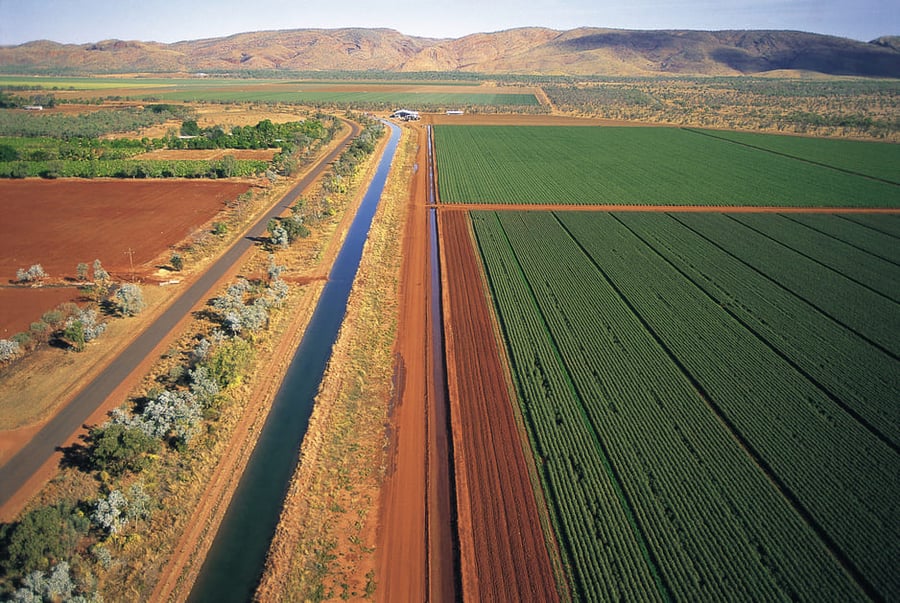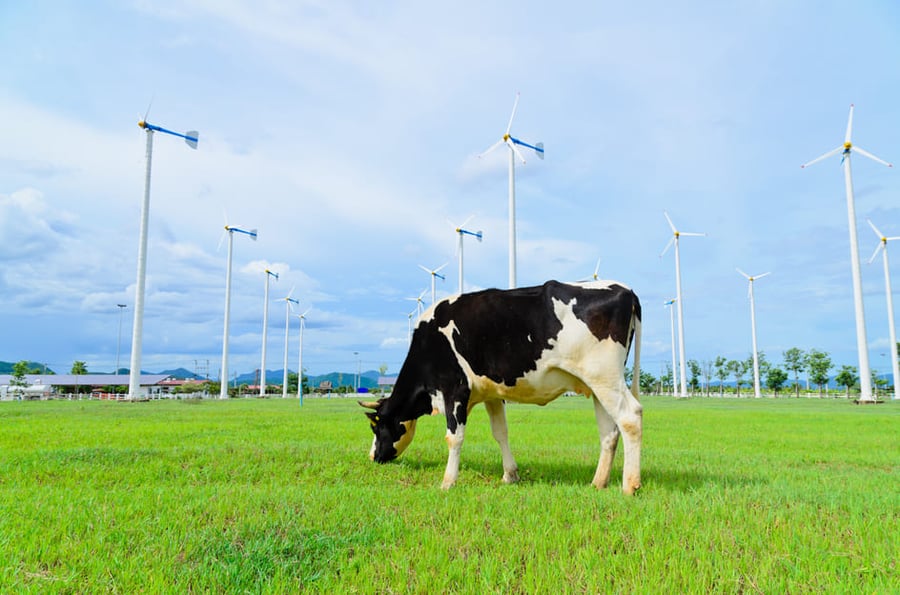Sustainability... a word that we all hear and say, eventually more often than needed. But what do we mean when we use it? Particularly, what does it imply in dairy farming? And what could be the major goals for sustainable farming?

The concept
In 1987, the United Nations Brundtland Commission1 defined sustainability as “meeting the needs of the present without compromising the ability of future generations to meet their own needs”. It assumes that resources are finite, and thus should be used conservatively and carefully to ensure there are enough for future generations. This must be assured without decreasing present quality of life. Three pillars are part of this concept: social, economic and environmental. Failing one, the whole concept is compromised… Any sustainable system should be socially responsible and economically viable while focusing on environmental protection.
Sustainable farming has become increasingly vital in agricultural policy debates and has led farmers to pay more attention to the questions of monitoring and evaluation of agricultural practices2. In this context, dairy farming is at a crossroads: it should continue to evolve in order to provide a fair livelihood for dairy farmers, and reduce its environmental impacts, while tackling health and animal welfare issues.

Environment and dairy farming
When addressing the environmental issues related to dairy farming, necessarily greenhouse gas (GHG) emissions are the subject. In fact, it is undisputable that dairy farms emit GHG. Two major sources are responsible for this: enteric fermentation of ruminant animals, and manure. Methane presents, on current news, the “big” problem, overlooking the fact that methane is a part of the biogenic carbon cycle, it is a short life GHG and thus a so called “flow gas”, unlike CO2, a stock gas, that builds up in the atmosphere. This shift in the way we classify methane in terms of warming potential is crucial3.
Most of our current dairy farming systems are efficient in using resources to produce a high value nutritive product: milk. Despite this, dairy farmers should continue to improve and innovate to further improve their practices towards an even more sustainable activity.
By adopting a circular vision of dairy farming systems, objectives are to find new interplays with cropping to improve feed/nutrient efficiency and reduce GHG emissions. Reposition of the dairy cow in a circular food system is a challenge. Feeding regimes should be designed to promote the use of byproducts and non-edible raw materials. On the manure side, optimizing its use minimizes loss of nutrients and dispersion into the environment and contributes to improve soil quality, leading to higher sequestration of carbon in soils4,5. By accounting for carbon sequestration that farms may provide the road is open to assess the product environmental footprint (PEF), this will provide an added value to the product.
Water is used for crop irrigation, drinking water for animals and also for cleaning. Minimizing the impact on the quality of surface and ground water is the first sustainable goal. This is connected to the use of fertilizers, manure, biocides, and other types of water contaminants. The second goal should be to improve on-farm water use. This can be achieved by improving irrigation efficiency (equipment, timing, precision), improving pumping and chiller efficiency for the milk parlor, managing plant water demand (using plant varieties adapted to the demanded conditions) and by adopting agricultural conservation practices to improve soil water holding capacity.
Animal health & welfare

Another hot issue when addressing Sustainable farming is health and welfare. This area directly influences the sustainability of a farm. Animals in good health & welfare conditions are more productive, have higher lifespan and emit less GHG/unity of product and throughout their life. Implementing animal welfare best practices and creating conditions to enable normal animal behavior by adjusting housing will have a positive impact on animal health and welfare. In this area, precision livestock farming (PLF) provides a huge potential and is recognized as fundamental for future dairy producers, allowing the continuous monitoring of the health and welfare of animals in production. Current scientific knowledge and technological development foresees important PLF developments in the near future for assessing and improving the welfare of dairy cows6,7.
Concerning disease, prevention is the word. On this matter the implementation of biosecurity programs in dairy farms is essential to improve cattle health, welfare, and productivity. Biosecurity is a key element in the battle against antibiotic resistance. Implementation of biosecurity programs and best practices on the use of antimicrobial substances is of outmost importance to avoid antibiotic resistance, in humans and animals, and cumulative effects of resistance. Biosecurity focuses not only on the reduction or prevention of the introduction of new diseases from outside sources but also on the reduction or prevention of the movement of infectious diseases within the farm. On this regard, the use of antibiotics can be reduced by simple preventive actions (physically inspecting animals, testing for bovine diseases, vaccination, etc.). Any biosecurity program should be adapted to the specific situations of each dairy farm.
Key take aways
In dairy farming, innovation and adoption of new practices and technologies to produce the same amount of milk using fewer natural resources has been constant and will continue to be a need. Sustainability goals to be applied in dairy farming should be based in a long-term vision and aim to:
- Emit the fewest possible GHGs
- Account for carbon sequestration in farms
- Estimate the product environmental footprint
- Improve on-farm water usage
- Prioritize animal health and well-being
- Implement biosecurity programs
- Conscient and efficient use of antibiotics
However, Sustainable farming goals must not be defined on the basis of a “one fits all” solution. Goals should be met by implementing multiple practices and technologies according to the needs and realities of each dairy farm.
References
1. UN, 1987. Report of the World Commission on Environment and Development: Our Common Future. http://www.un-documents.net/our-common-future.pdf
2. Clay, N., Garnett, T. & Lorimer, J. Dairy intensification: Drivers, impacts and alternatives. Ambio 49, 35–48 (2020). https://www.doi.org/10.1007/s13280-019-01177-y
3. Allen, M.R., Shine, K.P., Fuglestvedt, J.S. et al. A solution to the misrepresentations of CO2-equivalent emissions of short-lived climate pollutants under ambitious mitigation. npj Clim Atmos Sci 1, 16 (2018). https://www.doi.org/10.1038/s41612-018-0026-8
4. WUR, 2019. Manure, a valuable resource. https://edepot.wur.nl/498084
5. Animal Task Force, 2021a. Strategic Research & Innovation Agenda. ATF
6. Stygar, A.H.; Gómez, Y.; Berteselli, G.V.; Costa, E.D.; Canali, E.; Niemi, J.K.; Llonch, P.; Pastell, M. A Systematic Review on Commercially Available and Validated Sensor Technologies for Welfare Assessment of Dairy Cattle. Front. Veter. Sci. 2021, 8, 177.
7. Silva, S.R.; Araujo, J.P.; Guedes, C.; Silva, F.; Almeida, M.; Cerqueira, J.L. Precision Technologies to Address Dairy Cattle Welfare: Focus on Lameness, Mastitis and Body Condition. Animals 2021, 11, 2253. https://www.doi.org/10.3390/ani11082253
About the author
Ana Sofia Santos (Head of Research and Innovation at FeedInov CoLAB)
Ana Sofia Santos holds a MSc in Animal Production and a PhD in Animal Science, both on the Nutrition area. She is currently Head of research and Innovation at FeedInov CoLAB, an interface structure between the academia and the animal feed industry, promoting innovative approaches to animal feeding. Her current area of research interest resides on animal production systems and the integration of livestock and plant production systems within a holistic vision of circularity in food production.
Explore author’s articles
.webp)

Leave your comments here